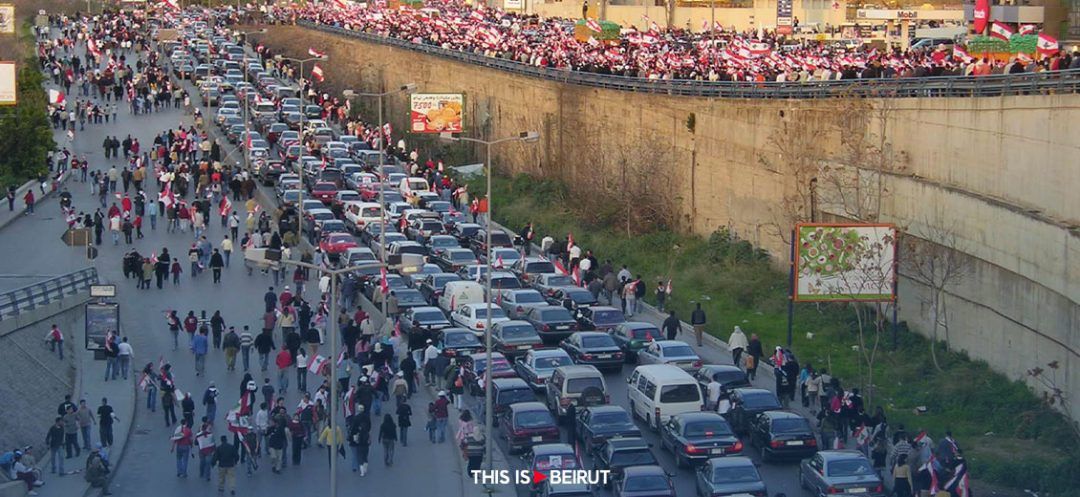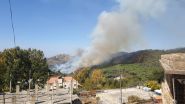
A pivotal moment in history... Such is the characterization one could give to the monumental gathering that took place at Martyrs' Square and its surrounding streets in downtown Beirut on March 14, 2005.
This date will forever be etched in Lebanon's annals, as several hundred thousand individuals (over a million, as per various sources) converged in this expansive area on that day, united in an extraordinary Lebanese surge that transcended communal divides.
From this event emerged a political movement, known as March 14, comprising a diverse array of parties, factions, currents and independent figures who would become the bearers of what later became known as the Cedar Revolution.
The successive existential crises that have beset the country since 2005, notably the fruitless conflict instigated by Hezbollah on October 8, culminating in the recent raids on Baalbek on Monday night and Tuesday, have underscored the pivotal significance of the March 14 movement.
These cascading crises vividly illustrate how the Cedar Revolution stood in stark contrast to Hezbollah's transnational agenda, explaining the violent and lethal counter-revolution initiated, as early as the spring of 2005, by the pro-Iranian faction to thwart the burgeoning sovereigntist momentum.
To truly grasp the significance and implications of March 14, a brief retrospective to the period of Lebanon's independence in 1943 is due.
At the end of the French mandate, President Bechara El-Khoury and Prime Minister Riyad El Solh were tasked with cementing independence by forging a National Pact. This unwritten agreement between the two leaders laid the groundwork for the political landscape of the ensuing era. It rested on two fundamental tenets: firstly, the "coexistence formula," which solidified the power-sharing arrangement among Lebanon's diverse communities, echoing the Ottoman-era model; and secondly, a stance of neutrality (neither East nor West), whereby the Muslim faction abstained from embracing pan-Arab and regional agendas, while the Christian faction refrained from alignment with the West.
The aim of this Pact was to foster a sense of national identity, a distinctly Lebanese consciousness, some Lebanese nationalism, with the ultimate goal of definitively turning the page on lingering reservations held by segments of Lebanese society regarding their incorporation into Greater Lebanon in 1920, some preferring to remain within the Syrian entity.
However, subsequent events, particularly the advent of Nasserist pan-Arabism and the emergence of armed Palestinian groups in Lebanon from the late 1950s onward, revealed that this page had not truly been turned.
In fact, the 1943 Pact was merely forged between two leaders, and did not translate into a genuine Lebanese national sentiment among certain grassroots constituencies.
It is precisely at this juncture that the significance and true scope of the March 14 momentum come into focus. For the first time in Lebanon's modern history, public squares and thoroughfares in the capital witnessed a massive cross-communal outpouring, reflecting a Lebanese sentiment that transcended sectarian divisions.
With the rallying cry of "Lebanon First" – encapsulating the essence of the movement – Christian, Sunni, Druze and Shiite elites marched shoulder to shoulder in tens of thousands, sometimes hundreds of thousands, waving solely the Lebanese flag, chanting identical slogans and espousing shared national aspirations.
This popular groundswell marked a departure from the 1943 agreement, which was confined to a select few leaders while failing to resonate with the broader populace.
Thus, a genuine cross-communal Lebanese dynamism was set in motion, posing a tangible threat to the transnational ambitions of the pro-Iranian faction.
In order to subvert this momentum, all means were deemed fair game, including the 2006 war and the October 8 provocation.
The ultimate outcome has been the erosion of the central state and a concerted attempt to overhaul Lebanon's identity, albeit unsuccessfully, by challenging its unique character, pluralism and enduring essence.
History, roots and the collective psyche of a people cannot be erased through the imposition of externally crafted political agendas driven by disproportionate hegemonic ambitions.
Read more




Comments